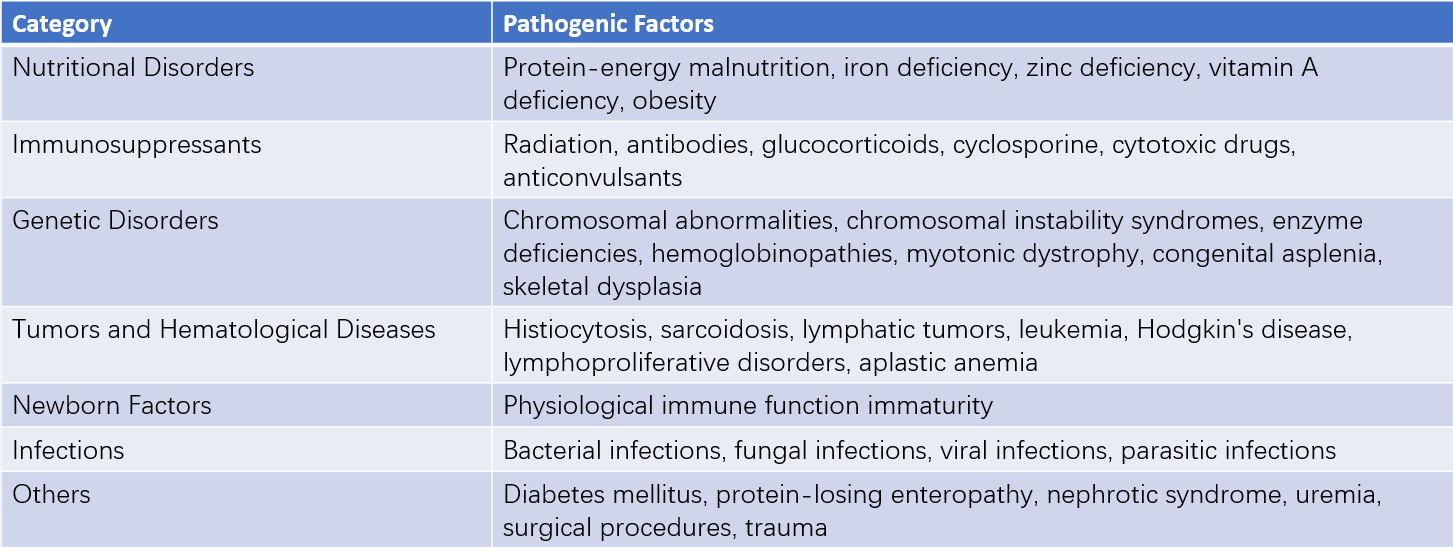Etiology
Secondary immunodeficiency diseases (SID) are characterized by temporary immune system dysfunction caused by unfavorable environmental factors after birth. Once these unfavorable factors are corrected, immune function usually returns to normal. Transient SID can occur at specific times or under certain environmental conditions throughout a person's life. The incidence of SID is much higher than that of primary immunodeficiency diseases (PID) and is reversible, making early diagnosis and identification of its triggers particularly important for timely intervention.

Table 1 Factors leading to secondary immunodeficiency diseases
Nutritional imbalances are the most common causes of SID in children and include protein-energy malnutrition (PEM), subclinical deficiencies of trace elements such as zinc and iron, subclinical deficiencies of vitamins A, B-complex, and D, alongside excessive intake of fats and carbohydrates.
Clinical Manifestations and Management
The most common clinical manifestations of SID include recurrent respiratory infections, such as repeated upper respiratory tract infections, bronchitis, and pneumonia. Gastrointestinal infections are also observed in some cases, typically presenting with mild symptoms but recurring frequently. Recurrent infections, especially gastrointestinal infections, can lead to more severe malabsorption issues, further exacerbating malnutrition. Infections themselves can directly contribute to further immune dysfunction, creating a vicious cycle of "malnutrition–immune dysfunction–infection–worsened malnutrition." This cycle constitutes a significant part of the disease spectrum in childhood.
The treatment principles for SID focus on addressing the primary condition and eliminating the triggering factors.